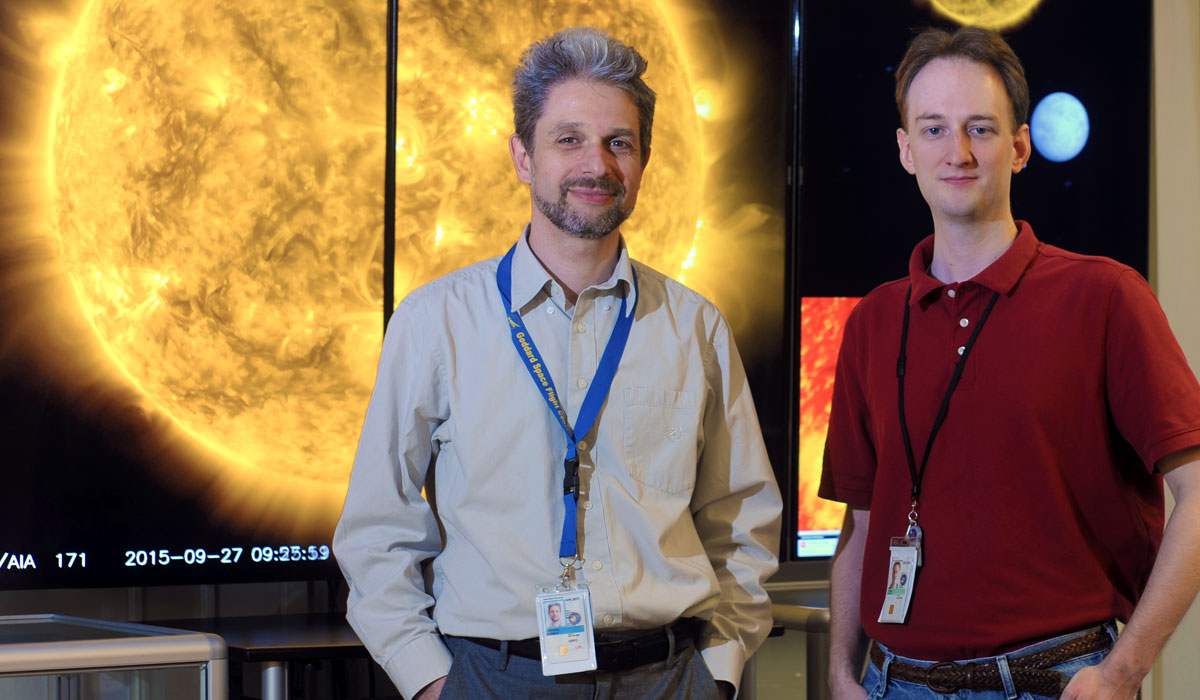

Physicists at The Catholic University of America Institute for Astrophysics and Computational Sciences can continue to make strides in scientific understanding thanks to a recent NASA grant for more than $29 million.
The grant, which is the single largest scientific research grant awarded in Catholic University’s history, is a renewal of funds for the University’s Center for Excellence in the Physics of the Heliosphere and the Sun (CEPHEUS), a cooperative agreement between NASA and the University.
“The overall purpose is to enable scientific research in the Heliophysics Division at [NASA’s Goddard Space Flight Center in Greenbelt, Md.],” said Bob Robinson, director of CEPHEUS. “The mission of the Heliophysics Division is to study the transport of energy, in both particles and radiation from the sun through interplanetary space and its effects on Earth’s atmosphere and ionosphere.”
Much of the work done by CEPHEUS involves looking at space weather — solar behaviors like flares, storms, and coronal mass ejections that can adversely affect radio communications, satellite technologies, and power grids on Earth. Space weather has become a major priority for NASA in recent years, and was the focus of a 2015 report issued by the White House Office of Science and Technology Policy.
To further advance the University’s studies in heliophysics, the physics department will open an on-campus Space Weather Center on Thursday, April 21, in Hannan Hall. Within the center, students will have access to solar monitoring feeds and equipment comparable to what can be found at NASA Goddard.
CEPHEUS was originally established in 2011 with a five-year grant of just under $11 million. It currently involves more than 40 Catholic University researchers, as well as numerous visiting scientists. According to Robinson, the new funding will provide those researchers the resources to continue the science they are interested in, with support from the federal government. It also allows the University to provide unique educational opportunities for both graduate and undergraduate students, by providing them access to NASA labs and mentoring.
“CEPHEUS allows the government to bring in a much more diverse, versatile, and flexible scientific workforce,” Robinson said. “It also helps fulfill the University’s mission in education, providing opportunities for the faculty and academic departments to take advantage of the expertise and resources that we have at NASA Goddard. I’d like to see that connection strengthened.”
The on-campus Space Weather Center will allow students to investigate extreme space weather events through data-driven simulations and advanced statistical analysis of past events, according to Vadim Uritsky, professor of physics.
“The Space Weather Center will also offer unique training opportunities in space weather and plasma science for undergraduate and graduate students participating in space weather forecasting and research,” he said. “It will proceed with a range of innovative educational initiatives including a new science course focused on space weather effects, a space weather seminar, and cutting-edge research projects for CUA undergrads.”